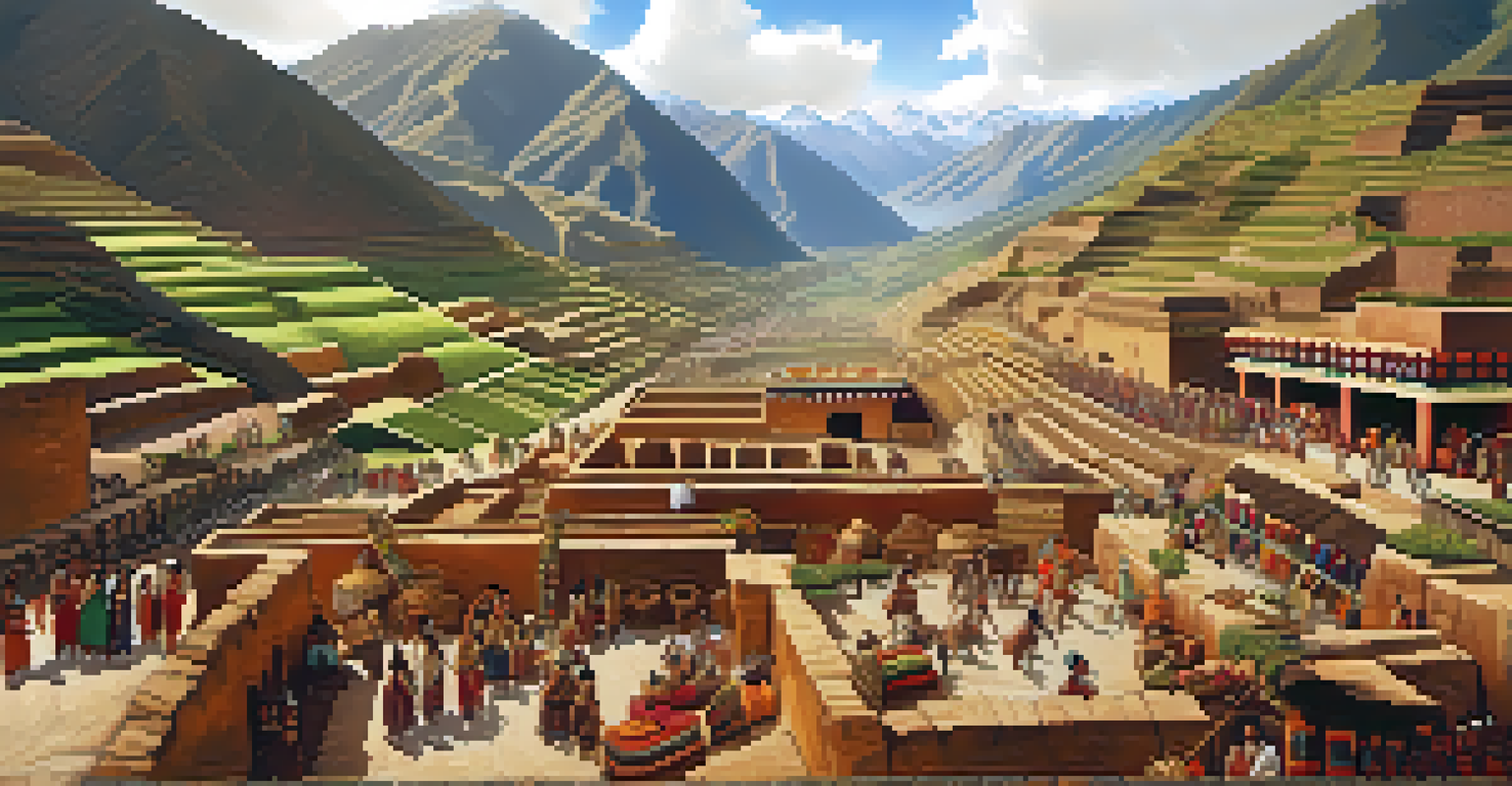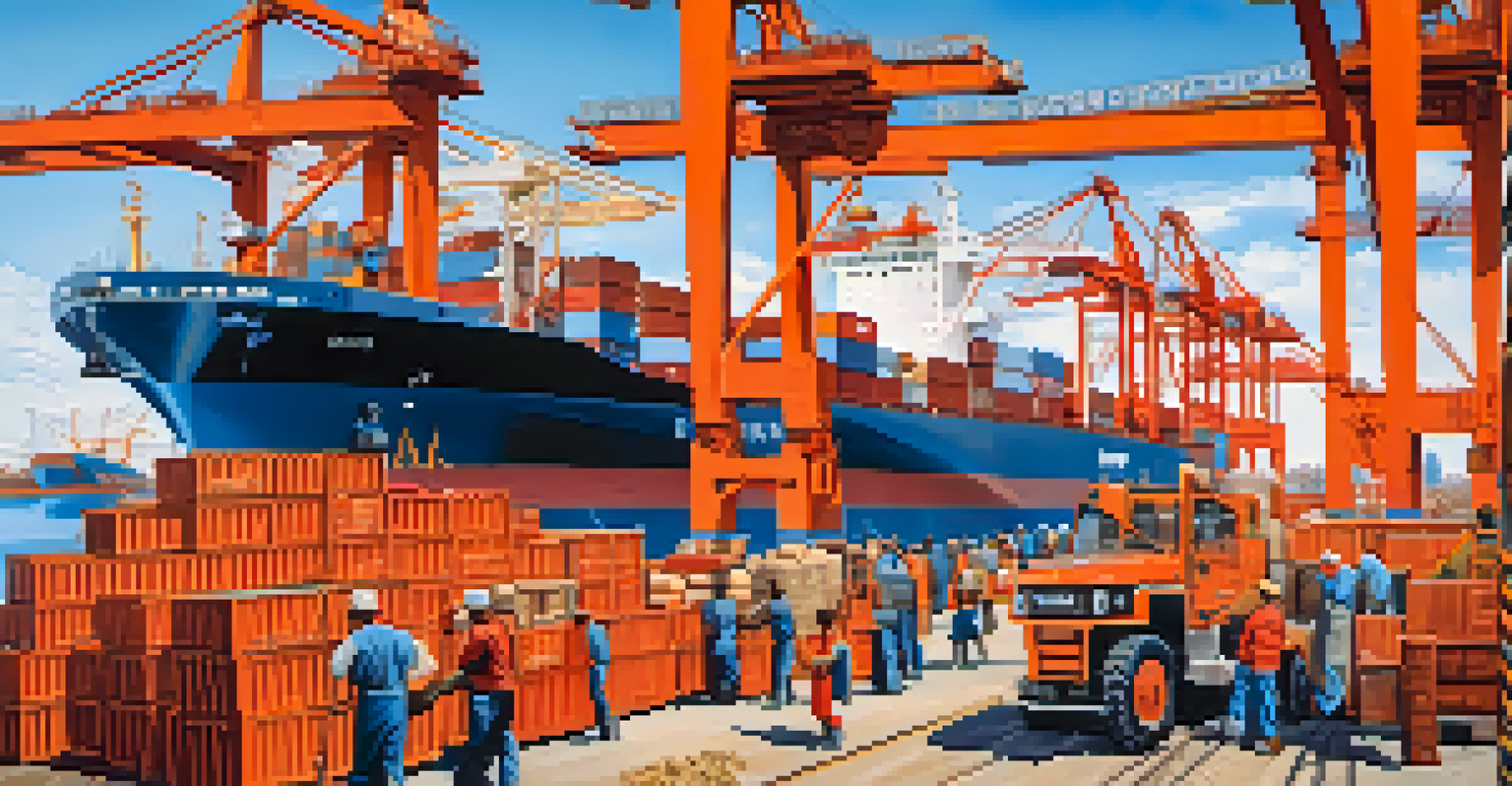The Silk Road's Influence on Peruvian Trade Routes

Understanding the Silk Road and Its Historical Context
The Silk Road was a network of trade routes that connected the East and West, facilitating not just commerce but also cultural exchange. Spanning from China through Central Asia to Europe, it played a crucial role in the transmission of goods like silk, spices, and precious stones. This vast network thrived from around the 2nd century BCE until the 14th century CE, shaping economies and societies along its path.
The Silk Road was a network of trade routes that connected the East and West, facilitating not just commerce but also cultural exchange.
While the Silk Road primarily linked regions across Asia and Europe, its influence reached far beyond these borders. Trade goods, technology, and ideas traveled along these routes, with effects felt in places like the Americas. Although the timeline is distinct, the concepts of trade and exchange laid the groundwork for future connectivity, including in regions like Peru.
Peru, known for its rich cultural heritage and resource wealth, was not directly on the famous Silk Road. However, the principles of trade established by this ancient route set the stage for later trade interactions in the Americas. As empires rose and fell, the echoes of the Silk Road's influence were felt in the ways that trade routes were developed and utilized in Peru.
The Rise of Trade in Pre-Columbian Peru
Before European contact, Peru was home to advanced civilizations such as the Moche, Nazca, and Inca. These cultures established their own trade networks that were influenced by broader trade practices, including those seen along the Silk Road. They exchanged goods like textiles, ceramics, and agricultural products, which were vital for their economies.

The Inca Empire, in particular, was renowned for its extensive road system that facilitated trade across the vast Andean region. While their trade routes were largely local, the Inca’s approach to trade was informed by earlier traditions that mirrored the interconnectedness of Silk Road practices. This included the exchange of items that held both economic and cultural significance.
Silk Road's Impact on Trade
The Silk Road established foundational trade principles that influenced later trade routes, including those in Peru.
As these civilizations thrived, they created complex systems of barter and trade, much like those found along the Silk Road. The exchange of goods among different communities helped to foster relationships and shared cultural practices, setting the foundation for Peru's rich trading history.
Cultural Exchanges Through Trade Routes
Trade routes are not just about the exchange of goods; they also serve as conduits for cultural exchange. As traders moved through various regions, they brought with them not only products but also ideas, technologies, and traditions. In Peru, this led to the incorporation of diverse influences into local customs and practices.
Trade routes are not just about the exchange of goods; they also serve as conduits for cultural exchange.
For example, the textiles produced in Peru showcased techniques and designs that were influenced by broader trading practices, including those from Asia. The intricate designs found in Peruvian textiles can be seen as a reflection of the global artistic connections made possible by trade. This cultural diffusion enriched Peruvian art and craftsmanship.
Moreover, the culinary landscape of Peru also reflects this exchange. Ingredients and cooking methods from various cultures made their way into Peruvian kitchens, leading to the vibrant and diverse cuisine that is celebrated today. Such developments underscore how trade routes, including those inspired by the Silk Road, fostered cultural richness and diversity.
The Influence of European Trade on Peruvian Routes
With the arrival of European explorers in the 15th and 16th centuries, Peruvian trade underwent significant changes. The Spanish conquest brought new goods and trade practices that were influenced by European markets, echoing the interconnectedness seen along the Silk Road. This led to the establishment of new trade routes that integrated Peru into a global trading network.
Spanish colonization introduced commodities such as silver, which became a primary export for Peru. The Potosí mine, for example, became a vital source of wealth for the Spanish Empire, linking Peru more closely to European trade dynamics. This integration marked a shift in the nature of trade, as it now connected Peru to the broader global economy.
Cultural Exchange Through Trade
Trade routes facilitated not just the exchange of goods but also the blending of cultures, enriching local customs and practices in Peru.
As trade expanded, so did the exchange of ideas and cultural practices. The blending of European and indigenous cultures gave rise to new social dynamics and economic practices that would shape Peru’s identity. This evolution in trade routes reflects the enduring legacy of earlier networks like the Silk Road, which had set the stage for global interactions.
Modern Trade Routes in Peru and Their Legacy
Today, Peru's trade routes continue to reflect a rich tapestry woven from its historical influences. The country's strategic location along the Pacific coast positions it as a trade hub for goods flowing between Asia and the Americas. Modern ports and trade agreements have rejuvenated this age-old tradition of exchange, reminiscent of the Silk Road's legacy.
Peru's economy is now significantly bolstered by exports such as copper, gold, and agricultural products, underscoring the importance of trade in contemporary society. The influence of historical trade practices can still be seen in how goods are exchanged and how markets are structured. This continuity speaks to the lasting impact of ancient trade routes on modern commerce.
Moreover, the spirit of collaboration and cultural exchange that characterized the Silk Road is echoed in today's trade relationships. Partnerships with countries around the world allow Peru to share its unique products and cultural heritage, fostering a sense of global community that traces back to those early connections established by trade.
Lessons from the Silk Road for Modern Trade Practices
The Silk Road teaches us valuable lessons about the importance of connectivity and collaboration in trade. In an increasingly globalized world, the principles of mutual benefit and cultural exchange remain relevant. By looking back at historical trade routes, modern economies can learn how to foster relationships that benefit all parties involved.
Additionally, the adaptability seen along the Silk Road serves as a reminder for contemporary traders. Just as ancient traders adapted to changing circumstances and embraced new ideas, today’s businesses must also remain flexible and innovative. This mindset can lead to sustainable practices that respect both cultural heritage and environmental concerns.
Modern Trade's Global Opportunities
Peru's modern trade landscape is evolving with technology, echoing the interconnectedness of the ancient Silk Road while promoting ethical practices.
Finally, the Silk Road illustrates the potential for trade to create lasting bonds between diverse cultures. In today’s interconnected society, embracing diversity can enhance trade relationships and lead to richer exchanges, much like those experienced along the ancient routes. This enduring legacy encourages us to value the connections that trade can foster across borders.
The Future of Trade in Peru: A Global Perspective
Looking ahead, Peru's trade landscape is poised for exciting developments. With advancements in technology and logistics, new opportunities for trade are emerging, allowing Peru to tap into global markets more effectively. As the country continues to strengthen its trade relationships, it can draw inspiration from the interconnectedness of the Silk Road.
The rise of digital trade platforms and e-commerce is transforming how businesses operate, providing avenues for Peruvian products to reach consumers worldwide. This shift mirrors the ancient trade practices of the Silk Road, where communication and exchange were key components of success. Embracing these changes can position Peru as a competitive player in the global economy.

Moreover, the emphasis on sustainable practices in modern trade aligns with the historical respect for local resources seen along the Silk Road. By promoting ethical sourcing and fair trade, Peru can build a reputation that honors both its rich history and its commitment to future generations. This approach will ensure that the legacy of trade continues to evolve positively.